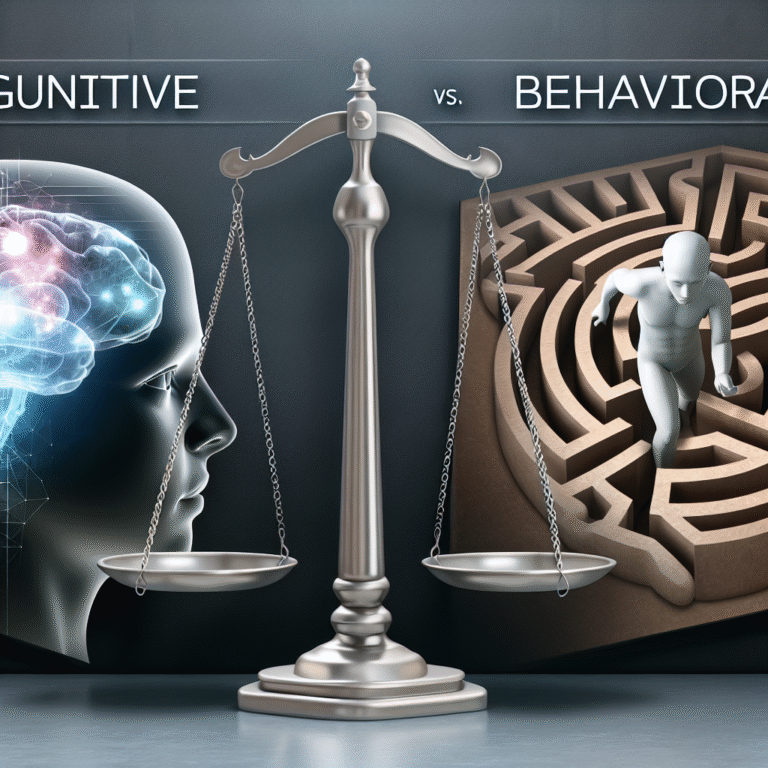
The Impact of Behavioral Psychology on Leadership Styles: What Every Manager Should Know
Introduction: The Unseen Force Behind Leadership
In the dynamic landscape of modern management, understanding the psychological underpinnings that influence behavior has become more crucial than ever. The Impact of Behavioral Psychology on Leadership Styles: What Every Manager Should Know sheds light on this crucial intersection between psychology and leadership. Today’s leaders face complex challenges that require more than just strategic thinking; they must also understand the nuances of human behavior to inspire and motivate their teams effectively. As we delve deeper into this topic, you will discover how behavioral psychology can inform various leadership styles, enhance team dynamics, and ultimately foster an environment conducive to growth and innovation.
Understanding Behavioral Psychology
Definition and Scope
Behavioral psychology, also known as behaviorism, focuses on the connection between our mind and behavior. It emphasizes observable behaviors over internal phenomena such as thoughts and emotions. This field of psychology offers valuable insights into how leaders can adapt their styles and strategies to influence employee behavior positively.
Key Theories
Several key theories underpin behavioral psychology that are particularly relevant to leadership:
Classical Conditioning: Proposed by Ivan Pavlov, this theory suggests that behaviors can be learned through association. Leaders can leverage this by creating positive connections between performance and rewards.
Operant Conditioning: B.F. Skinner introduced this idea, which posits that behavior is influenced by the consequences that follow it. Reward systems in organizations often stem from this principle, shaping team members’ performance.
- Social Learning Theory: Albert Bandura emphasized the role of observation and modeling in learning behavior. Leaders can be powerful role models, impacting how team members develop their skills and professional behaviors.
Understanding these foundational theories is essential for managers aiming to apply the principles of behavioral psychology to leadership styles effectively.
The Intersection of Behavioral Psychology and Leadership Styles
Autocratic Leadership
Definition: Autocratic leadership is characterized by centralized decision-making and a clear hierarchy.
Behavioral Insights: Research indicates that while autocratic leadership can yield quick results in times of crisis, it may stifle creativity and employee engagement (Goleman, 2000). Managers employing this style might rely on classical conditioning, using rewards and penalties to ensure compliance.
Case Study: The Crisis Leadership of a Retail Chain
During a significant downturn, a retail chain adopted an autocratic leadership style to enforce strict inventory control. While the approach led to immediate cost savings, employee turnover spiked afterward, highlighting the long-term drawbacks of neglecting team morale.
Democratic Leadership
Definition: In contrast, democratic leadership involves team participation in decision-making.
Behavioral Insights: This approach aligns with social learning theory. When leaders encourage collaboration, employees feel more valued and engaged, promoting a conducive environment for open communication.
Case Study: A Tech Startup’s Collaborative Framework
A tech startup embraced democratic leadership practices by establishing cross-functional teams to generate new ideas. Employee satisfaction surveys indicated an 80% increase in job satisfaction, demonstrating how collective decision-making fosters a positive workplace culture.
Transformational Leadership
Definition: Transformational leaders inspire and motivate employees to exceed their own interests for the sake of the organization.
Behavioral Insights: The principles of operant conditioning apply here, as transformational leaders often implement reward systems to reinforce desired behaviors while fostering an emotional connection that drives intrinsic motivation.
Case Study: A Nonprofit Organization’s Vision
A nonprofit successfully transformed its operations by adopting transformational leadership. Leaders focused on creating a shared vision that resonated with employees’ personal values. As a result, volunteer engagement increased by 120%, showcasing the power of aligning organizational goals with individual motivations.
Laissez-Faire Leadership
Definition: This style offers minimal intervention from leaders, allowing employees to make decisions.
Behavioral Insights: Behavioral psychology suggests that laissez-faire leadership can lead to high employee autonomy, but it may lack structure. Managers must be cautious, as this style can lead to diminished accountability.
Case Study: A Design Firm’s Approach
A design firm utilized laissez-faire leadership, granting creative freedom to its teams. While this approach yielded innovative solutions, a lack of oversight led to missed deadlines. This example underscores the importance of balancing autonomy with accountability.
Servant Leadership
Definition: Servant leaders prioritize the needs of their team members, fostering an inclusive atmosphere.
Behavioral Insights: This style is rooted in empathy and emotional intelligence, aligning with behavioral psychology’s focus on the significance of interpersonal relationships.
Case Study: A Community-Based Organization’s Impact
A community organization adopted servant leadership, focusing on employee well-being and professional growth. As a result, the organization increased employee retention by 30%, demonstrating how prioritizing team members’ needs can yield significant benefits.
The Practical Application of Behavioral Psychology in Leadership
Developing Emotional Intelligence
Understanding Emotions: Leadership isn’t purely about decision-making; it’s also about understanding emotions. Managers with high emotional intelligence can navigate complex interpersonal dynamics effectively.
Observation and Feedback
Managers should observe their team’s behaviors and provide constructive feedback, which aligns with social learning theory. Regular feedback helps shape behavior, promoting a growth-oriented environment.
Environment: Creating a Positive Workplace Culture
Using behavioral psychology, leaders can enhance team performance by creating an environment that promotes positivity. Initiatives like employee recognition programs can boost morale, leading to improved productivity.
Training and Development Programs
Investing in training helps employees develop new skills while reinforcing desired behaviors. Leaders can apply principles of operant conditioning by offering incentives for attendance and participation.
Strategies for Effective Communication
Effective communication can be cultivated through an understanding of behavioral psychology. Leaders should encourage open dialogues, fostering an environment where team members feel safe expressing their thoughts.
Tools and Techniques for Leaders
Behavioral Assessments
Tools like the DISC assessment help determine team members’ behavioral styles, enabling leaders to tailor their approaches effectively.
Regular Surveys and Feedback Loops
Implementing regular employee surveys can provide insights into team morale, engagement levels, and areas for improvement.
Recognition Programs
Recognition programs highlight and reinforce positive behavior, driving engagement and motivation.
Mentorship Opportunities
Facilitating mentorship pairings can enhance skill development and promote a culture of learning and support within the organization.
Conclusion: Transforming Leadership through Behavioral Insights
Understanding The Impact of Behavioral Psychology on Leadership Styles: What Every Manager Should Know is more than an academic exercise—it’s a practical imperative for today’s leaders. By grounding leadership practices in psychological principles, managers can inspire their teams, cultivate a positive work culture, and drive organizational success. To harness the full potential of behavioral psychology, leaders must adopt a mindset of continuous learning and adaptability, embracing new insights to refine their leadership style.
Motivational Takeaway
As you navigate your leadership journey, remember that the key to success lies in understanding your team’s behaviors. By applying the principles of behavioral psychology, you can create an environment where every team member feels empowered to thrive.
FAQs
1. How does behavioral psychology influence leadership styles?
Behavioral psychology impacts leadership styles by helping managers understand how behavior is learned and how it can be modified to enhance team dynamics and productivity.
2. What are some examples of leadership styles informed by behavioral psychology?
Common examples include autocratic, democratic, transformational, laissez-faire, and servant leadership. Each style has unique implications influenced by behavioral psychological principles.
3. Can leaders develop emotional intelligence?
Yes, emotional intelligence can be developed through self-awareness, self-regulation, empathy, and social skills, allowing leaders to better understand and influence team behavior.
4. How can feedback improve leadership effectiveness?
Regular feedback helps leaders understand their team’s needs and concerns, allowing them to adjust their leadership style and create a more engaging work environment.
5. What role do recognition programs play in employee motivation?
Recognition programs leverage the principles of operant conditioning by rewarding positive behavior, fostering motivation, and reinforcing a culture of appreciation.
By incorporating these insights into your managerial practices, you can maximize your effectiveness as a leader, driving not only organizational success but also fostering a positive and collaborative workplace culture.















